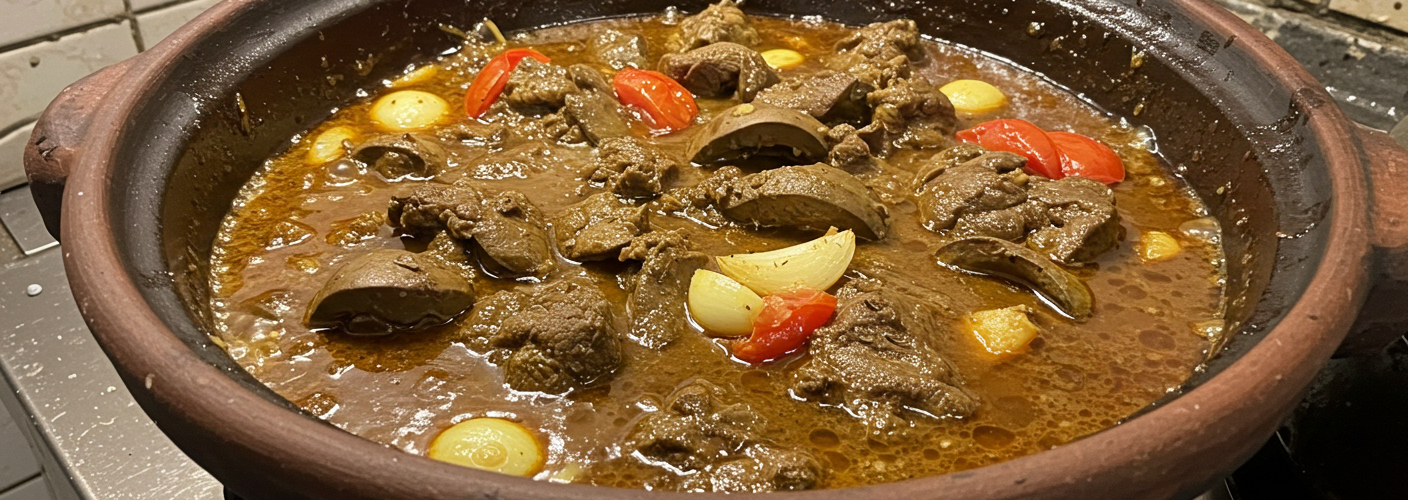Sudanese cuisine is a vibrant tapestry of flavors and traditions, with a number of dishes that evoke a deep sense of history and community. One such dish that has captured the hearts (and appetites) of many is Kamounia, a tantalizing stew made primarily with beef and liver, infused with the aromatic warmth of cumin. This dish is not only a staple in Sudanese households but also a symbol of the country’s agricultural abundance and culinary heritage.
What is Kamounia?
At its core, Kamounia is a robust stew that features a blend of tender beef and rich liver. The use of liver in the dish adds a unique depth of flavor, making it unlike typical beef stews. The main spice that defines Kamounia is cumin, which brings an earthiness and warmth that perfectly complements the richness of the meat. The dish is often prepared for special occasions, family gatherings, or communal feasts, highlighting its significance in bringing people together.
Ingredients and Preparation
To make a traditional Kamounia, you’ll need the following key ingredients:
- Beef: Choose cuts like chuck or brisket, which become tender when slowly cooked.
- Liver: Beef liver is commonly used, but you can experiment with lamb or chicken liver for a different flavor.
- Onions: A base of finely chopped onions adds sweetness and depth to the stew.
- Garlic and Ginger: These ingredients provide an aromatic backbone, enhancing the overall flavor.
- Cumin: The star spice, used in generous amounts, gives Kamounia its distinct character.
- Tomatoes: Fresh or canned tomatoes bring acidity and richness, balancing the stew.
- Chili peppers: For those who like a kick, fresh or dried chilies can be added to spice things up.
The preparation starts by browning the beef and liver in a pot with some oil, allowing the natural flavors to develop. Once browned, remove the meat and sauté onions, garlic, and ginger until they are soft and fragrant. Adding cumin at this stage will release its essential oils, and the aroma will fill the kitchen, inviting everyone to gather around.
After the onions are well-cooked, return the meat to the pot, followed by tomatoes and a splash of water or broth. The stew is then simmered on low heat, allowing the flavors to meld beautifully. Depending on your preference, Kamounia can be thickened with a_ bit of flour or left more broth-like. It is traditionally served hot, often accompanied by bread or rice, which is perfect for soaking up the rich sauce.
Cultural Significance
Kamounia is more than just a meal; it’s a celebratory dish that reflects Sudanese culture and hospitality. Sharing a pot of Kamounia with family and friends embodies the spirit of togetherness that is so valued in Sudanese society. Furthermore, this dish is a representation of the agricultural lifestyle, emphasizing the use of local ingredients and traditional cooking methods passed down through generations.
Conclusion
Whether you’re preparing Kamounia for a festive occasion or simply to enjoy a taste of Sudanese heritage at home, this beef and liver stew with cumin is bound to impress. Its bold flavors and comforting textures offer a delightful culinary experience that connects you to the rich traditions of Sudan. So gather your ingredients, invite loved ones over, and let the heartwarming journey of Kamounia unfold in your kitchen.




Add comment